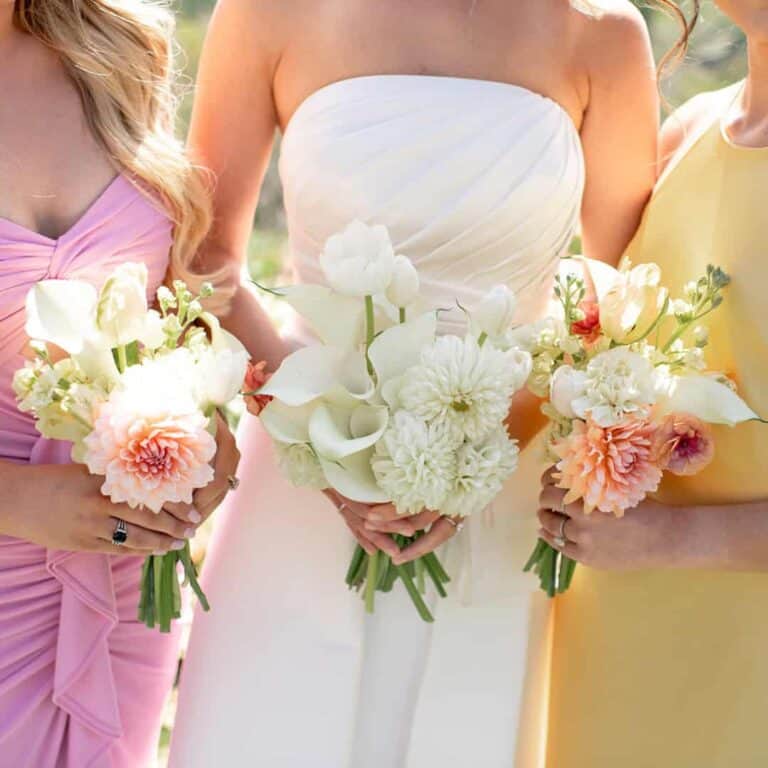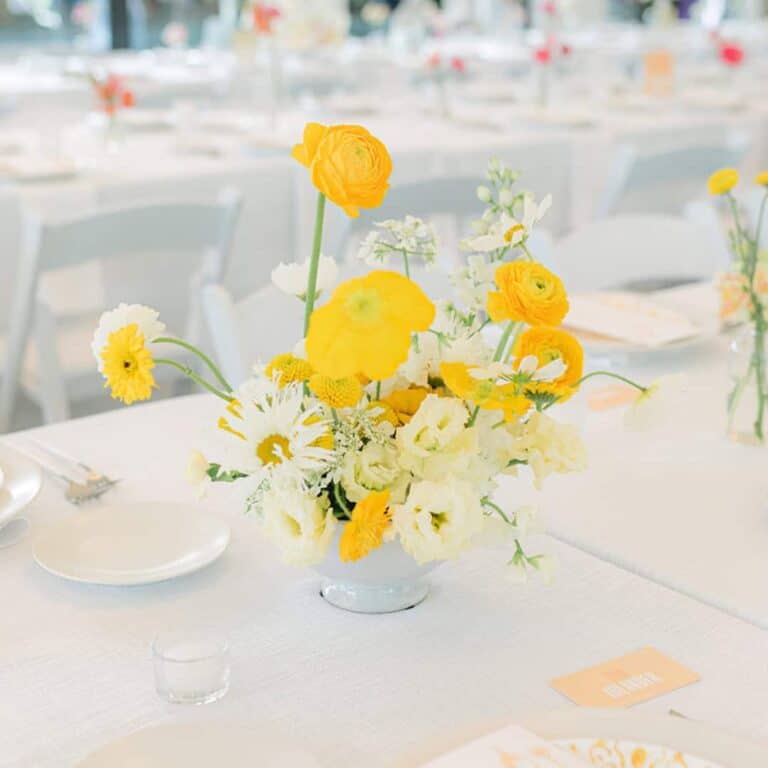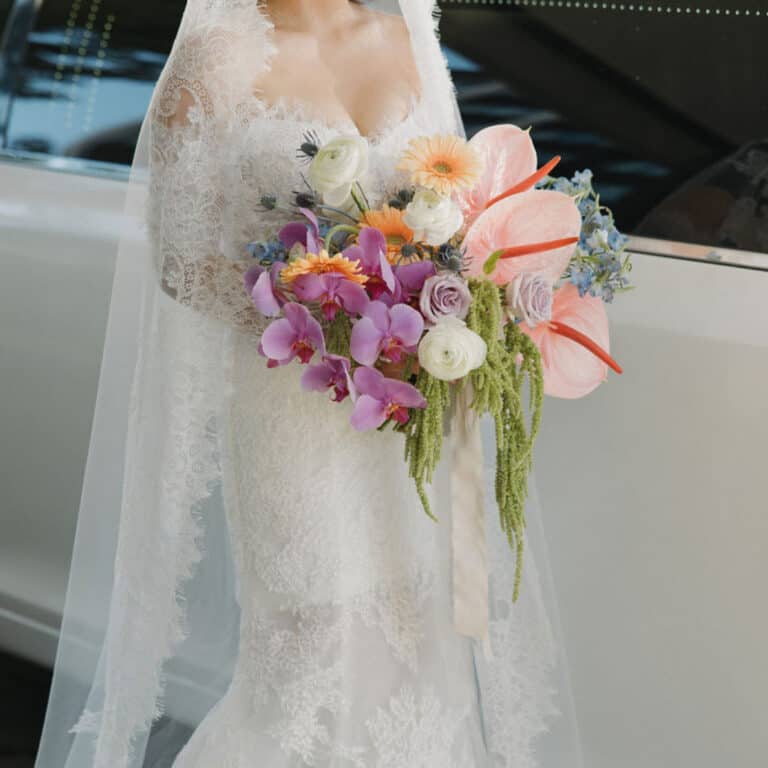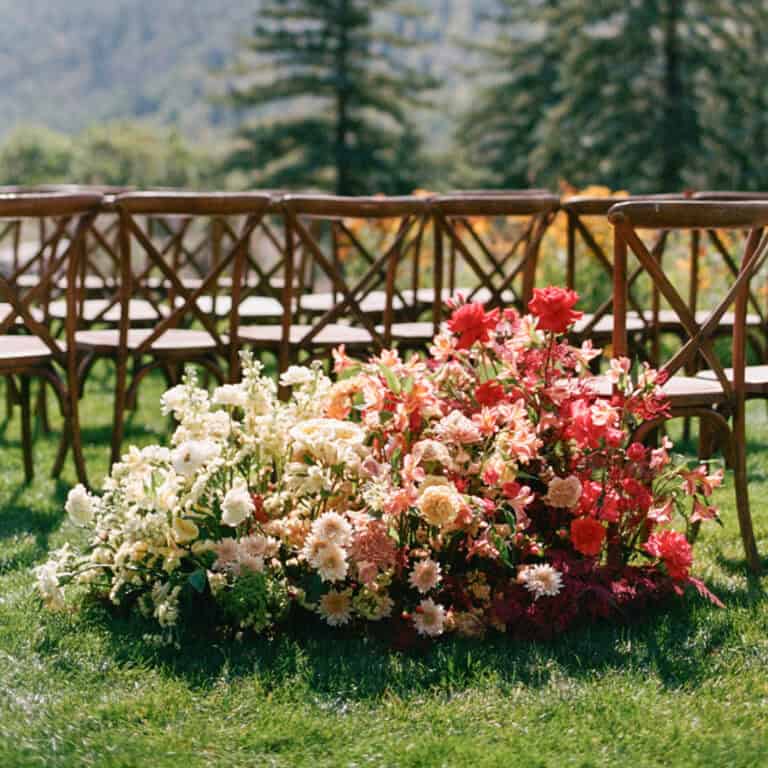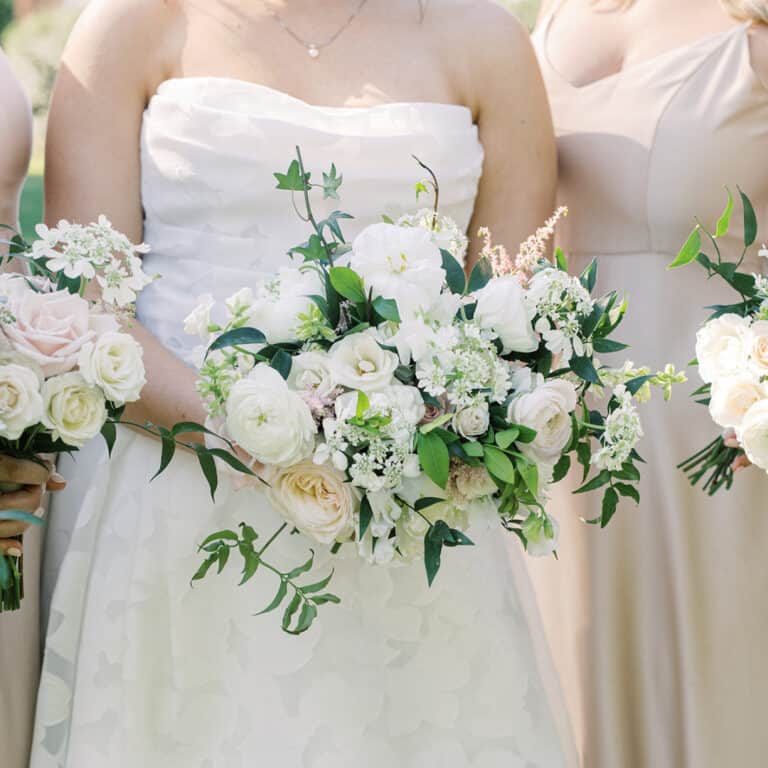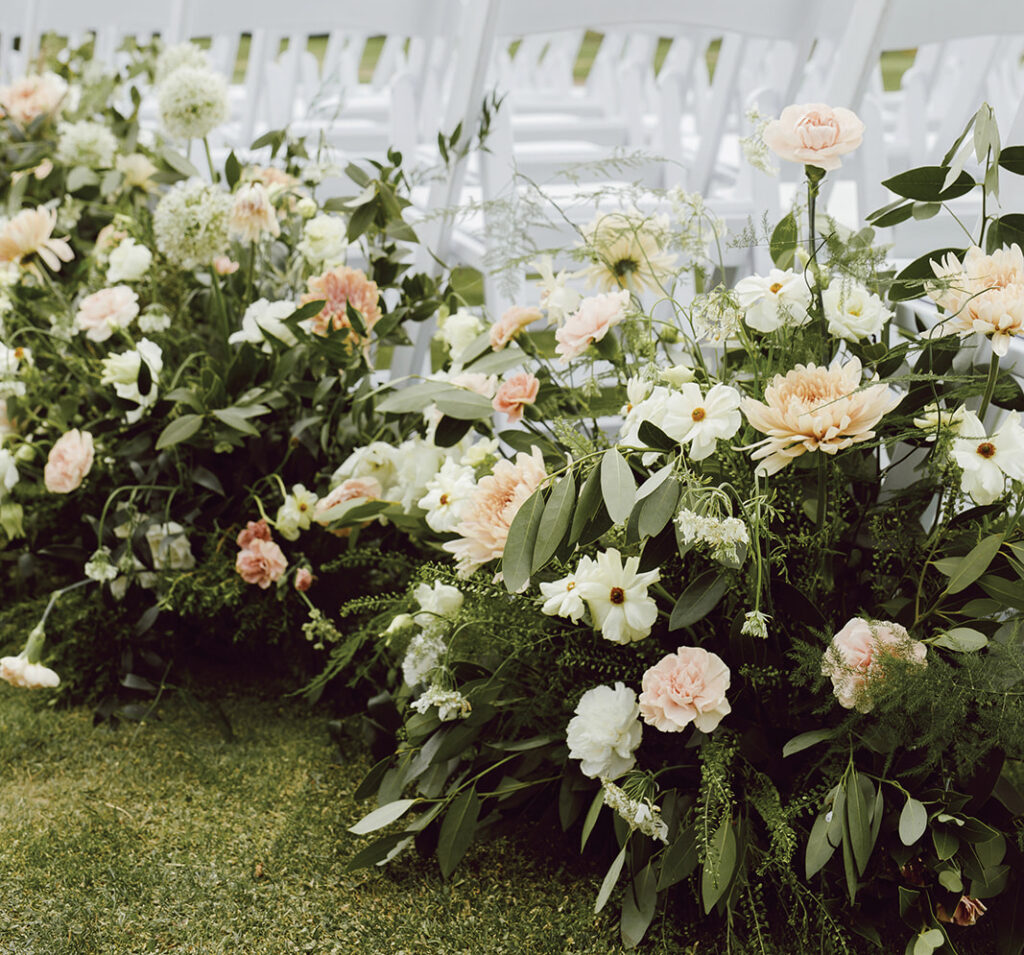
As a wedding florist, one of the most common questions I hear is, “Why do wedding flowers cost so much?” It’s a fair question! At first glance, flowers might seem like a simple, natural beauty—something that grows freely and should be reasonably priced. But behind every stunning bouquet, every breathtaking floral arch, and every elegant centerpiece is a great deal of time, effort, and expense. Let’s break down why wedding flowers come with a higher price tag than you might expect.
Rent, Storage, and Cooling Space
Fresh flowers are delicate and require careful handling. Unlike a product that can sit on a shelf indefinitely, flowers need the right conditions to remain in perfect shape for your big day. This means florists must invest in:
Coolers and refrigeration: Flowers need to be stored at precise temperatures to keep them fresh and vibrant. Walk-in coolers are a necessity, and they come with hefty energy bills.
Workspace rental: Many florists operate out of dedicated studio spaces, which come with rent, utilities, and maintenance costs.
Supplies storage: Beyond flowers, florists need space for vases, ribbons, mechanics (such as floral foam or chicken wire), and other tools that are used in floral design.
Transportation Costs
Flowers don’t just magically appear at your venue in perfect condition. Getting them from the farm to the florist to the wedding requires a well-thought-out transportation plan. This includes:
Vehicles: Florists need vans or large trucks equipped to transport delicate arrangements safely.
Fuel and maintenance: Gas, repairs, and insurance for these vehicles add up quickly.
Delivery and setup: Setting up floral installations at a wedding often requires multiple trips, careful loading/unloading, and sometimes long hours on the road.
Freelancers and Assistants
Wedding florals are not a one-person job. Many weddings require an entire team to ensure everything is executed flawlessly. This means hiring skilled freelancers or assistants to help with:
Processing flowers upon arrival (cutting stems, hydrating, removing thorns, etc.).
Arranging centerpieces, bouquets, and large installations.
Transporting and setting up floral designs at the venue.
Staying on-site for any last-minute adjustments or transitions. All of this labor contributes to the final cost of your wedding florals.
Cost of Hard Goods
Flowers are only part of the equation. The materials used to create floral arrangements—known as “hard goods”—also come with costs. These include:
Vases, candles, and vessels for arrangements.
Floral mechanics such as wire, foam, water tubes, and chicken wire.
Ribbons, decorative elements, and specialty materials requested by the couple.
Specialty tools such as clippers, floral tape, and adhesives. All of these materials are necessary for executing a beautiful floral design.
The Actual Cost of Flowers
Flowers themselves are expensive! A single bridal bouquet may contain dozens of premium blooms such as peonies, ranunculus, or garden roses, which cost significantly more than standard flowers. Factors affecting the cost include:
Seasonality: Out-of-season blooms must be imported, increasing costs.
Sourcing: Many florists source flowers from local farms or international wholesalers, both of which come with fluctuating costs.
Quality control: Not all flowers that arrive are usable—some may be damaged or wilted, requiring extra purchases to ensure every arrangement is pristine.
The Time and Labor Behind Each Wedding
Floral design isn’t just about arranging pretty flowers—it’s a time-intensive craft that involves:
Consultations and proposals: Meeting with couples, discussing their vision, and creating detailed proposals.
Ordering and processing: Carefully selecting and conditioning each stem to ensure freshness.
Design time: Handcrafting bouquets, boutonnieres, centerpieces, and installations, sometimes over the course of several days.
Day-of logistics: Transporting, setting up, and often returning to clean up or repurpose flowers after the event.
Breakdown and cleanup: At the end of the night, florists must return to the venue to dismantle floral structures, collect rental items, and dispose of wilted flowers responsibly.


